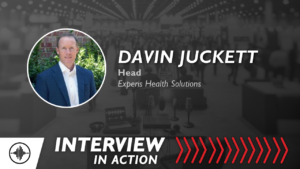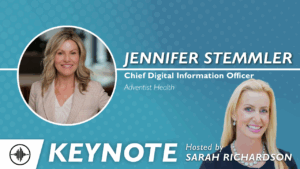- Walgreens plans to launch telehealth visits on its website later this month, as the retail pharmacy giant continues its strategic pivot to healthcare services.
- Walgreens Virtual Healthcare will offer on-demand virtual consultations with providers for common medical needs and medication prescriptions.
- Walgreens is adding direct-to-consumer virtual care because “our goal is to be the most convenient health and wellness destination, whether you’re physically in our stores or virtually in our stores,” said Tracey Brown, Walgreens’ chief customer officer and president of retail, while debuting the new offering at the HLTH conference in Las Vegas on Monday.
Patients in eligible states — California, Florida, Georgia, Illinois, Michigan, Nevada, North Carolina, Ohio and Texas — will be able to access WVH on Walgreens.com starting in late October.
Walgreens is launching WVH in those states because they include almost half of the U.S. population and nearly half of Walgreens’ pharmacy customers, a spokesperson told Healthcare Dive.
Patients will be able to access a doctor or nurse practitioner via chat, along with video visits for select conditions, on their own devices. At launch, WVH clinicians will be able to treat seasonal allergies, COVID-19 or flu, erectile dysfunction, hair loss, birth control or other common health needs, the spokesperson said.
If a patient needs a medication, WVH can send that prescription to a Walgreens pharmacy or have it delivered to their home on the same day.
Most WVH chat visits will be priced at $33 out of pocket, while video visits will range from $36 to $75. That pricing is in-line with other direct-to-consumer telehealth options. At Amazon Clinic, for example, messaging-based consultations cost $35 on average, while video visits cost $75.
Walgreens is not accepting insurance at launch, but said it plans to accept insurance some time in the future.
It’s not Walgreens’ first foray into telehealth. VillageMD, the value-based medical chain majority owned by Walgreens, offers virtual care services, and Walgreens has offered telehealth dermatology since 2016.
But it is the latest healthcare initiative from Walgreens, a company in flux as it faces flagging earnings, shaky investor confidence and C-suite turnover. Along with Walgreens’ CFO and CIO, CEO Roz Brewer also recently announced plans to leave the Illinois-based retailer.
Walgreens’ board said the company would search for a replacement with “deep healthcare experience.” An early contender is reportedly Tim Wentworth, former chief executive of Cigna businesses Evernorth and Express Scripts.
Walgreens’ U.S. Healthcare segment, which includes VillageMD, at-home care provider CareCentrix and specialty pharmacy Shields Health Solutions, has boosted the company’s recent earnings. However, the division’s profit ramp has been slower than expected, management said during its third quarter earnings call in June.
Along with bolstering VillageMD through acquisitions of provider groups and divesting its stake in home infusion provider Option Care Health, Walgreens also recently announced a partnership with physician enablement startup Pearl Health to provide management services to community providers.














